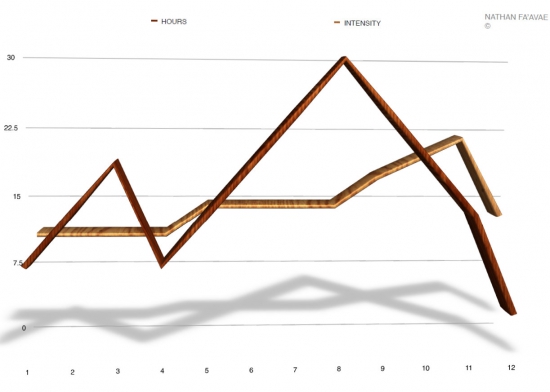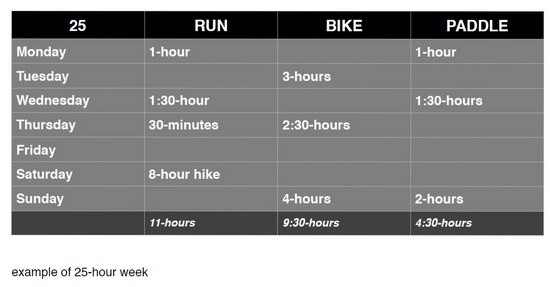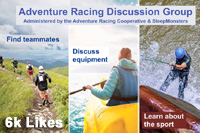Adventure Race Training & Skills (Part Seven of GODZone - What’s The Plan?)
Press Release / 27.04.2020

Training for adventure racing should be a mix between getting fit and competent. Adventure racing often has technical sports included so it’s really important that you prepare for what you can expect in the race. For Eco Challenge Fiji in 2019, we had outrigger canoeing, stand up paddle boarding and sailing as part of the race, so those sports needed to be built into training for the event.
Once you know what the disciplines will be in the race you’re focusing on, you want to invest time in becoming proficient at them, and the best time to do that is in your off season, or before you knuckle down for the fitness part of your training. You want to avoid having to learn new skills close to the race as it can be stressful floundering around learning something when you feel you should be training hard instead.
Okay, onto training. It’s important to point out that training is very specific to an individual. I can give you a guide as to what to do but the best results will come with a personalised programme. That said, for most people, a generic training programme will suffice to achieve their goals.
If you’re doing GODZone, the first step is decide whether you want to train with a plan for 12 or 16-weeks. Calculate that date and mark that as the official start to your build up.
Between now and then I suggest you tick over with about 6 to 8 hours exercise per week. You can do more if you wish but it shouldn’t be a chore, it’s just because you enjoy getting out. Let’s call this the off-season. For my off-season I mainly keep active by skiing, touring and downhill. I’ll mix in a few bike rides, runs and paddles as I feel the desire.
Mixing in some longer trips will be a bonus if you can, some day hikes or weekend tramping trips but it’s important not to feel that you need to do these. Sea kayaking is a great way to build paddling endurance and enjoy time in the outdoors. Once you get into your training build up there will be big volumes and you’ll need to juggle life and make sacrifices, so save those credits for when you need them.
The 12-16 Week Build Up
I have found for me that 8 is the magic number. If I train each discipline 8-hours per week I’ll go well. Unfortunately though, that equates to a 24-hour week which I can rarely justify with life’s other demands. But 16-hours is typically achievable. That said, there are better results to be gained from varied training, rather than getting into a routine and doing that over and over.
To design a GODZone program, the question you need to realistically answer is how much time do you have to train. There is no point designing yourself a programme of 20-hours per week when you only have 10-hours to play with. Work out what the maximum amount of training is that you could do in one week. Ideally, it should be about 30-hours.
30-hours may sound like a lot and it is, but if you do a 10-hour day hike (with a 10kg pack on), that’s counted as 10-hours. If you do a weekend tramp with a full pack and you hike for 15-hours in total, then you need to clock up another 15 hours during the week to make up your 30.

But 30-hours is not realistic or sustainable for 12-weeks, that’ll just be your biggest week, which should happen about 4-weeks out from the event.
Let’s use the 12-week programme as the example. If there are any races in this 12-week period, anything from paddling, mountain biking, running, orienteering, cycling, multisport, use them as training. My philosophy is if there’s a race on, be on the start line.
What you need to do is picture a graph that has a 30-hour week on the eighth week. From week one start with a 10-hour week, then add five hours each week for 3-weeks, then make week 4 the same as week 1, a recovery week. Then from week 5 add 5 hours per week until week 8 to reach the 30-hour target. Weeks 8-12 drop the volume by 5 hours per week.
Training intensity should start off steady, everything you do for the first 4 weeks is at conversation level, if you’re with your team, you should be able to maintain a discussion while training. After a recovery week on week 4, step up the intensity a notch, not by much, but your training is slightly more focused. You’re clocking up the hours now until week 8. The final 4-weeks the volume drops 5 hours per week, you need to recover from the training you have done, but you want to sharpen up also so the intensity rises as the volume decreases. This is where you can start adding intervals and higher heart rate training, it’s time to go hard. 7-10 days out from the main event you taper, volume and intensity reduces significantly.
The bigger volume weeks are ideal to do some team training adventure weekends.
Daily Training
That’s the overall picture. Now it’s time to look at what a day and a week looks like. There are a few guidelines to follow as a theme. Ideally, it’s best to train 2-disciplines per day if you can, alternating the combination. For example, Monday run & paddle, Tuesday bike & run, Wednesday bike & paddle. This is not crucial but adventure racing is a lot about adjusting to different disciplines quickly so training for that is worthwhile. Aim to train each discipline 3-4 times per week, essentially 9-12 sessions in total. Each session should have a theme, short and easy (recovery), medium but hard (strength), long and slow (endurance). If you add a 4th session in make it technique or skills focused
As a general overview, I believe that logging hours is what is important with adventure racing, and how and when you get those hours is largely flexible. Provided you get the hours in your system and make sure you do some longer endurance sessions, a few ultra long bike rides, paddles and runs, and then allow yourself time to recover, you’ll have a strong race.
I always maintain that one rest day per week is wise. If you can train 7-days per week, you’re not training hard enough on the other . A massage on your rest day is bliss.
Remember, it’s not how much training you can do that will get you results, it’s how much training you can recover from. Try as much as you can to keep your diary empty in the final 6-weeks in your build up. Minimal work, train, eat, sleep, give yourself the best chance of having a great race.
Sponsors
AVAYA, RAB, inov-8, Santa Cruz, Torpedo7, THINK Kayaks, Saltstick, Em’s Power Cookies, Absolute Wilderness Freeze Dried Meals, SUUNTO, Frontier Packrafts, BMG Toyota, Tineli, Xinix
Nathan Fa'avae is the captain of Team Avaya (formerly Team Seagate) and 6x Adventure Racing World Champion. He is also a Race Director of the Spring Challenge and Absolute Widerness Adventure races in New Zealand, and a co-owner of Absolute Wilderness Freeze Dried Foods. You can find out more about him at https://nathanfaavae.nz/






 SleepMonsters
SleepMonsters



